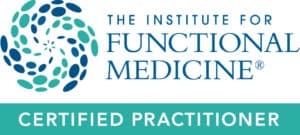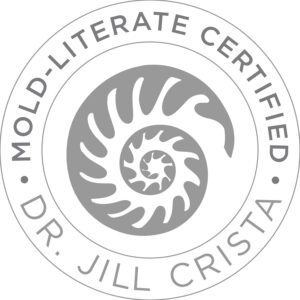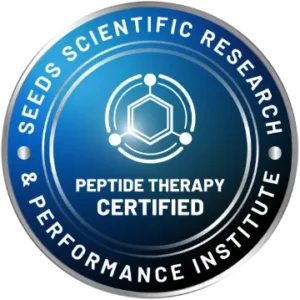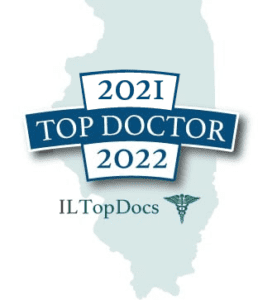
Heart Health
Dyslipidemia is characterized by an abnormal amount of lipids in your blood (triglycerides and other fats) that also cause cholesterol to become out of balance. To help our patients bring their lipid levels under control, we use a functional medicine approach.
Heart Health
Heart disease is the most common cause of death in the United States. This is true for men AND women. And for most people, the first sign of heart disease is a heart attack ~ where 1 in 10 die. Even though that statistic makes it seem that people just wake up one day with heart disease, there actually is a very long phase prior to a cardiovascular event like a heart attack or stroke where there are significant changes within the vascular system. These changes can start decades before there is any sign of cardiovascular disease. the sooner we can detect these changes and reverse the damage, the better we can prevent events such as heart attacks.
In the last 10 years or so, there have been major advancements in the field with a dramatic increase in our knowledge of vascular biology – not only what is happening within the tubes of the arteries, but more importantly what is actually happening within the walls of the arteries that lead to plaque development or atherosclerosis. Unfortunately, these advancements have not made it to mainstream medicine, but are readily available. These cutting edge diagnostics allow for a more accurate and comprehensive assessment of a patient’s risk for heart disease, and lead to very targeted recommendations to prevent the progression to a cardiovascular event such as a stroke.
Cardiovascular (CV) disease is a term that encompasses several different disease entities: Hypertension (high blood pressure), high cholesterol, Atherosclerosis, peripheral artery disease. Heart attacks and strokes are what we call a Cardiovascular Event (CVE). All of these diseases are rooted in poor health of the vascular system, and most often, these unhealthy changes occur over time due to dysregulated sugar metabolism including diabetes, pre-diabetes, and obesity. We refer to this now as Cardiometabolic disease, or cardiometabolic syndrome. This means that the long phase of the silent development of CV disease is largely related to lifestyle choices like diet and exercise.
Determining your risk for heart disease is like gathering and putting together a 500 piece jig-saw puzzle. We know that cholesterol levels are a very important driver of the development of heart disease, but it goes far beyond what your total cholesterol level is. Optimal blood pressure management is also a major contributor to increased risk of a CVE. These together with other traditional risk factors such as age, gender, smoking history tell us only half the story. The other half of your risk for heart disease lies in your genetics. Thankfully, we now have the capability in assessing your genes as they relate to cardiovascular health and utilizing this information as key leverage points to optimize your health.
While determining your predisposition for heart disease is extremely important, determining where on the spectrum of cardiometabolic disease you are is the key to reversing the process and preventing heart disease. The development of plaques within the arterial wall is a direct result of altered vascular biology. Changes occur within the arterial wall. These changes are initially an appropriate response to an insult, such as high blood pressure, or high blood sugars. However, when these insults do not go away, these adaptive responses of the arteries turn to a maladaptive response that propagates further damage and thus creates more disease. It is a snowball effect that increases inflammation and oxidative stress. By using various testing methods and biomarkers, we can better identify the progression of atherosclerosis and make appropriate interventions.
Dyslipidemia
A third of the American population suffers from elevated cholesterol levels beyond what’s considered a “healthy” range and are prescribed statins and other medications to adjust cholesterol levels.
Yet new studies have revealed that cholesterol numbers are not the most accurate indicators for heart disease and cardiovascular risk. The conventional approach primarily seeks to reduce the LDL cholesterol and triglycerides with medications – without considering that these numbers are just a sign of some other underlying dysfunction.
High cholesterol, hypercholesterolemia and hyperlipidemia have all been used interchangeably since the 1980s to describe a state where there is too much cholesterol in the system leading to an increased risk for CV disease.
A newer term – Dyslipidemia – is being used as this is a much better description of what needs to be assessed when looking at cholesterol levels. There are different types of cholesterol, each having a specific function. Cholesterol is not bad – it is essential for the body in numerous different functions. We need to have optimal function of the different types of cholesterol.
By just lowering the LDL or “bad” cholesterol as we have tried, we do not always reduce the risk of a heart attack. Cholesterol lowering medications called statins – such as Lipitor or Crestor, are not great at preventing your first heart attack – they only reduce your risk for heart attack by 27%. Moreover, 50% of people who were hospitalized for a heart attack had normal cholesterol levels.
Cholesterol serves as a biomarker of heart disease and interpreting the cholesterol results is far more intricate than needing to lower the bad cholesterol, and try to raise the good cholesterol. Cholesterol comes in different forms: very small dense cholesterol particles like golf balls, and very big fluffy particles more like beach balls, and everything in between. We need to be assessing which type of cholesterol particles each person has. Small dense LDL particles are much more likely to drive the production of plaques in the arteries, or atherosclerosis. Large LDL particles are considered to be lower risk. The problem is that someone can have high levels of small dense LDL particles, with a very normal or even low LDL level that is seen on a traditional cholesterol test. Oftentimes, cholesterol lowering medications will lower the standard LDL number, but will not lower the particle number, which represents a much truer risk factor for heart disease.
Advanced lipid testing with NMR fractionation gives you much more information as to your cholesterol profile, including the total number of cholesterol particles, and how many small or large particles make up that total number. This lipid profile testing is standard for every patient at Shine Functional Health.

Functional Medicine & Advanced Testing
Advanced CardioVascular screening also tests for other biomarkers involved in the disease process. These are tests that give invaluable insight into levels of inflammation, oxidative stress, plaque development and stability. One test in particular, the PULS ( Protein Unstable Lesion Signature) test can quantify your risk for a cardiovascular event in the next 5 years. It is an invaluable tool that can help detect severe disease otherwise missed, as well as to monitor disease resolution and efficacy of treatment programs.
Traditional and even advanced markers as above are only telling half the story. Genetics play a major role in our risk of developing heart disease. The Cardia-X test from Vibrant-America tests for common genetic SNPs (single changes in genes that can change the function of the gene) that are associated with increased predisposition to numerous medical conditions associated with heart disease – including risk for high blood pressure and blood clot formation. The genes tested are specific to risk for heart disease, and it allows for
Determining where you are on the spectrum of heart disease is essential. It can mean the difference between addressing a nearly completely blocked artery under a very controlled setting vs in an emergent active heart heart attack situation. All of these parameters tested are modifiable – there is an intervention that can be implemented to address the cause and reverse the process of cardiometabolic disease.
Contact Us
135 N. Arlington Heights Rd
Suite 152
Buffalo Grove, IL 60089
Phone: 224-345-2532
Fax: 847-512-4678
[email protected]
Recognition





